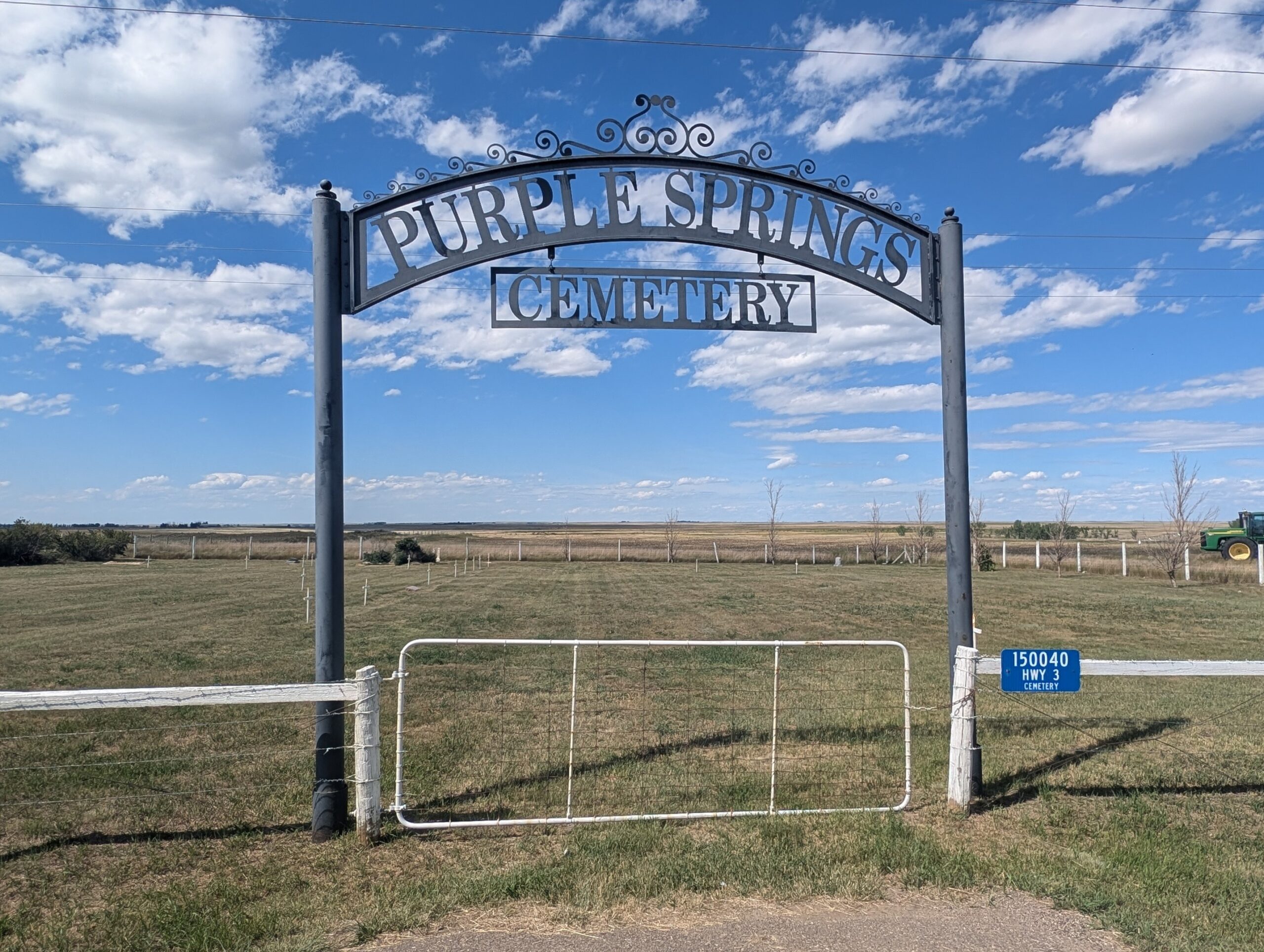150040 Highway 3 (Crowsnest Highway)

In the wide expanse of southern Alberta, roughly 17 km east of the Town of Taber, lies the small hamlet of Purple Springs. Nestled along Highway 3, the community is marked by a modest yet historically significant burial ground, the Purple Springs Cemetery.
The cemetery originated as a local, informal burying ground for pioneer settlers in the early 20th century. The town’s earliest families—including the Dragoos—used it for their community burials. One tragic example is the funeral of 16‑year‑old Nellie Dragoo in July 1928, mourned by the entire district at Purple Springs school and laid to rest in the local cemetery, amid a heavy summer rain and floral tributes, reflecting the tight‑knit, devout community of early settlers.
Throughout the 1930s–1950s, the cemetery continued to serve as the final resting place for prominent settlers of the district. In April 1934, news accounts noted funerals at Purple Springs and Taber for pioneer farmers like John Jenkins, whose relatives from Purple Springs and surrounding areas attended. Similarly, in 1950, Mrs. Thomas Levi “Grandma” Rash—who arrived from Oregon in 1910 and settled near Purple Springs in 1917—was buried in Taber cemetery, reflecting the interconnectedness of communities and resting places in the region. In 1957, the death of district farmer Peter Hooge was reported, and while interment took place in Taber, his influence in the Purple Springs area underlines the significance of local pioneer families.
Another notable burial in August 1959 was Albert Henry Treece, born in Derby, England in 1886. Treece homesteaded in the Purple Springs district starting in 1907, farmed there until retiring in Taber, and was laid to rest in the eponymous cemetery after funeral services in Taber.
Purple Springs traces its name to nearby natural springs and the purple wildflowers that bloom in the coulees of the area—hence the cemetery takes both geographical and cultural significance from its hamlet. The hamlet itself is part of the broader Municipal District of Taber, a region defined by agricultural irrigation, sugar‑beet farming, and intensively farmed lands developed in the mid‑20th century. While Purple Springs grew modestly, reaching around 44 residents in 2016 and 101 in 2021, the cemetery remains a relic of its early pioneer roots.
Though small and sparsely maintained, the Purple Springs Cemetery is an important marker of early settlement in southern Alberta. Its simplistic markers and fading memorials capture an era of homesteading, hardship, and devotion among early Prairie settlers. Efforts by local heritage groups, including the Taber Museum, aim to preserve the memory of those buried there by recovering names and restoring records—a testament to community continuity and respect for the past.
Address
150040 Highway 3 (Crowsnest Highway)
Nearest Populated Centre: Purple Springs,
Province: Alberta
Map Location
Latitude, Longitude
49.81512, -111.91194
Map Location
| Surname | Given Name | Born | Died | Age | Photos | Cemetery | R Code |
|---|---|---|---|---|---|---|---|
The 25 most common surnames found in this cemetery.

The 25 most common given names found in this cemetery.

